(Cue the Sesame Street theme.) This installment of Research Roundup is brought to you by the letter T.
Got your attention? Of course I did. The topic of raising male testosterone levels is sure to bring a crowd to stiff attention, whether it's the world of sports nutrition and performance, or poolside at a senior center. Peruse the ads in a golf magazine these days, and you'll see the letter T more often than you'll see the word "tee."
I believe in giving the people what they want. So in this installment, I'll look at current studies involving supplements that could help you raise your natural levels of testosterone, how some natural supplements match up to a certain blue pill, and name a few things to avoid unless you want your T-level to sink faster than a shanked nine-iron.
Don't worry, ladies, I haven't forgotten about you. In fact, I bring you news that you definitely want. That glass of red wine in your hand can help your sex drive, your metabolism, and even your physique (not to mention the appearance of your partner). Unfortunately, it didn't help the keyboard you just spilled it across.
Oh, and one more thing: If you're pregnant, stay calm. No, really. More on that later; in the meantime, think about cutting it off after this glass.
On to the naughty bits!
Taurine Is For Lovers
J Biomed Sci. 2010 Aug 24;17 Suppl 1:S9.
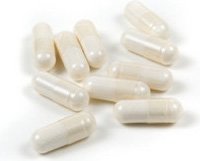
A recent rat study out of China explored the role of the beta amino acid taurine in male sexual function and noted a striking correlation. Specifically when male rats were provided taurine, the hormones testosterone and luteinizing hormone (LH) were significantly increased across all age groups. In infant rats taurine was also found to significantly increase estrogen (E) concentrations, but in adult and aged rats no significant rise in E was observed.
Taurine only increased sperm motility within the adult rats, and it increased both sperm motility and total sperm count in the older rats. Furthermore, in the adult and aged male rats, taurine also significantly increased superoxide dismutase (SOD) and nitric oxide synthase (NOS). However, only within the aged rats did nitric oxide (NO) increase in response to taurine, whereas NO actually decreased within adult rats.
Practical Application
Taurine is practically ubiquitous within today's energy drinks. However, this vital amino acid does more than just hotwire your central nervous system. Taurine is also a critical antioxidant. It may facilitate calcium rectification for more responsive muscle contractions, it has been shown to function as an insulin mimetic, and it is one of the most abundant free aminos within early breast milk and the male reproductive system.
From this study, it also appears that taurine may increase T and could actually prove more effective for improving male sexual function in older men.
That said, you aren't a rat (not as a species, at least). Rodent models offer a cost-effective, fast, and more controlled trial option to explore research hypotheses that may apply to humans. Thus, animal studies are great for exploratory research (please, no calls from PETA), but their results can't automatically be assumed as universal when applied to higher-order human critters.
Caveat aside, taurine, in my opinion, is a must-have supplement for almost anyone from fitness athletes to sedentary couch potatoes. Time will tell if taurine supports testosterone production in adult and older males, but given its range of other well-documented benefits, you wouldn't be wasting your money including taurine to your daily supplement stack. For best results, consume between 45 and 230mg of taurine per pound of body weight each day. That's a minimum of about 8g of taurine per day for a 175-pound person. Consume on an empty stomach, or prior to consuming meals or drinks containing carbohydrates.
Gunning For The Blue Pill #1: Burdock Root
BMC Comp Alt Med. 2012, 12:8.
Native to temperate, tropical and Western Asia, and parts of Europe, the roots of the edible burdock plant (Arctium lappa) have been consumed for centuries as an aphrodisiac and to improve male sexual prowess. Recently, the comparative equivalent of human doses of burdock root and a standard dose of Viagra were administered to male rats for 15 days to assess their respective effects on measures of sexual performance.
Though Viagra was more effective at increasing mounting frequency, erections and reducing recovery time in rat-lovin' sessions, the high doses of burdock root were still significantly effective within these performance areas. However, where burdock root excelled and Viagra fell limp was on testosterone response. Both the human equivalent doses of 44 and 88mg per pound of body weight of water extracted burdock root significantly increased serum testosterone (almost 87 percent and 126 percent versus the control group, respectively), whereas Viagra's effect on T was no different from consuming water.
Practical Application
Aside from being the inspiration for Velcro-you heard that right-burdock root is a popular ingredient in natural prostate treatments, cleansing/detox formulas, and-in its vegetable form-in vegetarian sushi. It's not hard to find, and it's a popular food source in many parts of the world. In this case, the root also stood up remarkably well against its ballyhooed pharmaceutical foe.
If burdock root extract is as effective at raising testosterone in humans as this study suggests, you could safely consume at least 44 mg of a water (aqueous) extract of Arctium lappa L., per day. For a 175-pound person, that's 7.7g of whole root extract, per day. The major vitamin manufacturers all produce capsule versions as well. Consume with water and on an empty stomach.
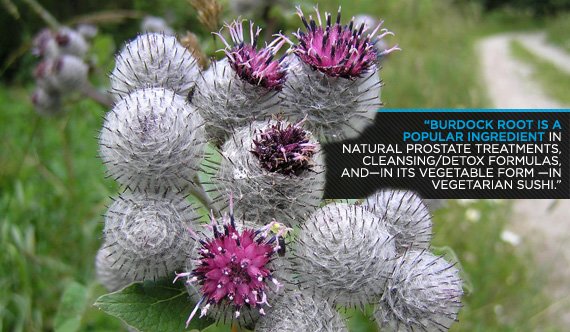
Gunning For The Blue Pill #2: Pedalium murex Linn.
J Ethnopharmacol. 2012 Aug 30;143(1):201-6.
Researchers out of India recently reported a dose-dependent increase in serum testosterone and measures of sexual performance when rats were given the human equivalent of approximately 4, 7.5, and 11 mg of an ethanolic extract of Pedalium murex fruits, per pound of body weight, per day, for 28 days. What's more, it was reported that the observed effects extended for up to two weeks beyond discontinuation of the herbal supplementation period and that both the herbal extract and Viagra significantly increased nitric oxide (NO).
Practical Application
Pedalium murex has a long history in Indian medicine in treating sexual disorders, as well as acting as a cold treatment and antiseptic. It is sometimes confused with Tribulus terrestris Linn, which is a popular test-booster, but the two are not from the same genus or family, and their respective chemical compositions are very different.
If an extract of the looking fruits of Pedalium murex L., which is native to Africa, the Arabian Peninsula and tropical Asia, is comparably effective at raising testosterone in humans, this study suggests that you could safely to consume about 4-11mg of an ethanolic extract (fruits), per day. For a 175-pound person, that's between 700 mg and 1.925 g of whole fruit extract per day. Consume with water and on an empty stomach.
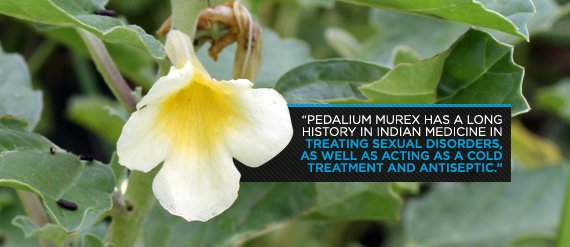
Gunning For The Blue Pill #3: Massularia acuminata L. Root Extract
Andrologia. 2011 Oct; 43(5):334-40.
A key active ingredient found within several current herbal testosterone formulas, Massularia acuminate Linn. was recently shown to stimulate testosterone, luteinizing hormone, and follicle stimulating hormone (FSH). It also compared favorably with Viagra for improving sexual performance.
Specifically, the human equivalent dose of approximately 4, 7.5, and 15 mg per pound of body weight per day of a water extract of M. acuminata root were each shown to significantly, albeit statistically similarly increase T, LH, and FSH in male rats. However, only the lower two doses of M. acuminata root extract yielded significant effects on measures of sexual performance similar to those achieved by the control drug, Viagra.
Practical Application
Massularia acuminata has only been on the global supplement scene for the last 4 or 5 years, but it's profile has risen enough that it can be purchased as a standalone extract in addition to being in various test booster blends. If the root extract is comparably effective at raising testosterone in humans, this study suggests that you could safely consume about 4-7.5 mg of a water (aqueous) extract per day. For a 175-pound person, that's approximately 700 mg-1,313 g of whole root extract per day. Consume with water and on an empty stomach.
Gunning For The Blue Pill #4: Spilanthes acmella L. Flower Extract
Phytomedicine. 2011 Oct 15; 18(13):1161-9.
When the human equivalent doses of approximately 4, 7.5, and 11 mg per pound of body weight, per day, of an ethanolic flower extract of Spilanthes acmella Linn. were provided to male rats for 28 days, researchers from India reported that the herb yielded a dose-dependent response for measures of sexual performance and hormone levels.
Specifically, the highest dose of the flower extract (~11 mg/pound/day) resulted in the greatest rise in testosterone, luteinizing hormone, and follicle-stimulating hormone, as well as sexual performance. The researchers noted that the observed effects remained significantly elevated for up to two weeks after discontinuing supplementation. The herb was also reported to significantly increase NO release, but this observed effect was not statistically different than what occurred in response to Viagra.
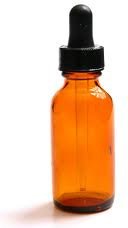
Practical Application
A sexual supplement that lasts for two weeks? Somebody get this one into the daily announcements at the senior center! And frankly, the flower also looks the part …
Spilanthes leaves are already used in the sexier parts of the world, such as Brazil, where they're a native plant and a common salad ingredient. The flower buds have other uses as well, including as flavoring in chewing tobacco in India. The extract version isn't common, but is available online and in some health-food stores.
If an extract of the flowers of Spilanthes acmella L., (also commonly known as Blainvillea acmella L.), which is also native to Africa, tropical and temperate Asia, and Australia, is comparably effective at raising testosterone in humans, this study suggests you could to consume about 4-11 mg of an ethanolic extract (flower), per day. For a 175-pound person, that's between 700 mg and 1.925 grams of whole flower extract, per day. Consume with water and on an empty stomach.
Testosterone Plummets In Response To High-Glycemic Carbs
Clin Endocrinol (Oxf). 2012 Jul 17. [Epub ahead of print]
Researchers from Massachusetts General Hospital in Boston recently showed that when 74 men consumed 75 grams of a high-glycemic carbohydrate, they experienced an average reduction in serum testosterone of 25 percent, and that T remained suppressed for up to two hours after consuming the glucose load. Furthermore, the reduction in T occurred regardless of the person's glucose tolerance (e.g., type 2 diabetic or normal) or body mass index.
Making matters worse, of the subjects with normal fasting blood glucose levels and glucose tolerance, 15 percent were observed to have serum T levels that dropped beyond the normal T range, down to levels indicative of hypogonadism (low androgen hormone concentrations).



Practical Application
Another study, another strike against our old breakfast buddy the bagel-as well as against soft drinks, and white bread, waffles, and those pixie sticks you dump in your coffee every morning.
Though the researchers didn't specify T-response by age group (subject ages ranged from 19-74, with the average age at around 51 years), I'd surmise that the most pronounced reduction in T was most likely observed within those persons over the age of 30. Previous research has shown that high-glycemic carbs consumed immediately post-workout may reduce the anabolic response to protein ingestion in older men. That runs contrary to the data in college-aged men, which has shown insulin-spiking carbs plus protein to be synergistic for supporting muscle protein synthesis. However, this is a relatively new area of study, and any bearing this study on the post-exercise state is highly speculative.
For the time being though, if you're trying to maintain high testosterone, you may benefit by avoiding consuming large amounts of processed grains, sugar, and other high-glycemic foods. I suspect you've been given those directions before.
Is Insulin Spiking Crashing Your Testosterone?
Andrologia. 2012 Feb 9. [Epub ahead of print]
Healthy, adult men with normal fasting blood glucose were used as subjects to assess the hormone response to a 75-gram dose of a high-glycemic carbohydrate. Among the subjects, 358 had at least one parent with Type 2 diabetes, and 287 presented no family history of the disease. It was concluded that testosterone was negatively related to body mass index, plasma insulin, and C-peptide, but positively related to insulin sensitivity and the hormones cortisol and thyroxine (T4; a thyroid hormone).
Practical Application
Translation: The softer you get, the more your mighty upper-case T devolves to lowly "t" status. Beyond that, we're entering into the realm of punctuation and math symbols-nowhere you want to be.
Beyond the basic health implications of the findings, proactively increasing insulin sensitivity through supplements such as Fenugreek seed extract, taurine, or D-pinitol may support healthier levels of T. Similarly, as with the previous study, it appears that high-dose, high-glycemic loads of carbs should be avoided as part of a high-T regimen.
Last, though exercise wasn't a part of this study design, the correlation between the catabolically classified hormone cortisol and the anabolic hormone T indirectly confirms a wealth of data in support of high-volume, high-intensity training to promote the greatest exercise-induced rise in T. Remember: the greater the stressor, the greater the anabolic response needed to bring your body back into balance.
Red, Red Wine, You Make Me Feel So Fine
J Womens health (Larchmt). 2012 Mar; 21(3):281-4.
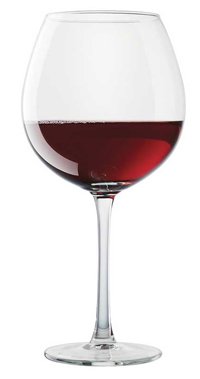
Thirty-six premenopausal women consumed one 8 oz glass of either red or white wine per day for a month as part of a recent study conducted at the Cedars-Sinai Heart Institute of Los Angeles. After the month was up, each woman went "dry" for a period, and then spent another month drinking the other type of wine (i.e., this was a crossover trial where each woman consumed both treatments). Red wine was shown to result in significantly higher levels of free testosterone and luteinizing hormone (LH), and significantly lower concentrations of estradiol (E2) and the sex hormone binding globulin (SHBG) than when those scores were measured in those who drank white wine.
The researchers concluded that the results appeared to support the role of red wine as an aromatase inhibitor, which could explain the seeming contradiction that while breast cancer risk rises with alcohol consumption, this doesn't apply when the women are drinking red wine specifically.
Practical Application
Premenopausal women looking for a muscle-toning boost, not to mention a kick-start to their sex drive and metabolism, may want to reach for a glass of red wine each day. Add it to the list of reasons!
At this point, red wine is like fish oil's free-wheeling best friend. If someone figures out how to mix the two palatably, we may live forever.
Advice To Pregnant Moms: For The Love Of Boys, Don't Stress-Out!!!
J Neurosci. 2011 Aug 17; 31(33):11748-55.
Researchers at the University of Pennsylvania in Philadelphia recently presented evidence that raises serious concerns about the effects of stress prior to and during pregnancy. Specifically, when pregnant female mice were exposed to early gestational stress, the male offspring became dysmasculinized and more sensitive to stressors.
Even when the stress was administered prenatally, gene expression patterns in the male offspring showed a more female-like pattern in genes involved in neurodevelopment and resulted in a sexually dimorphic brain. Tellingly, the processes affected not only the immediate offspring but of subsequent generations, too.
Practical Application
Again, this is an animal study and not a human one, but the implication is that high-drama mamas may create drama-queen mama's boys. On the flipside, chilled-out moms have a better chance of raising the Cool Hand Lukes of the playground.
Whatever the specifics may be, the current study supports the notion that responsibly and selflessly raising a well-adjusted and healthy child begins long before the child is ever conceived.
